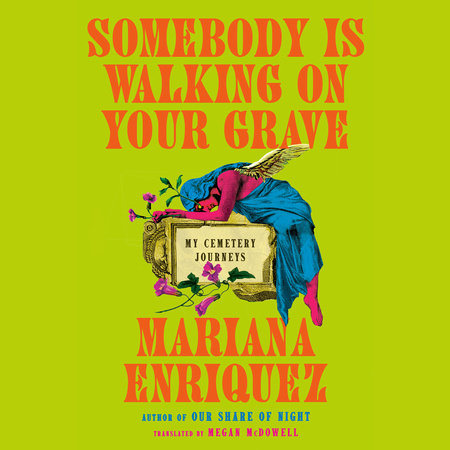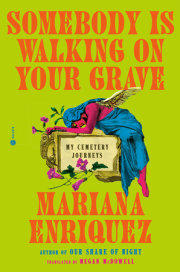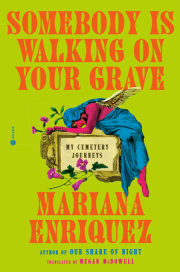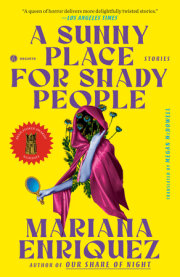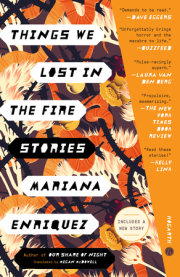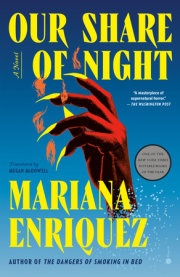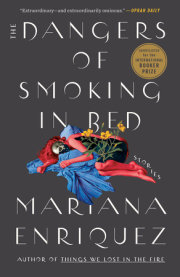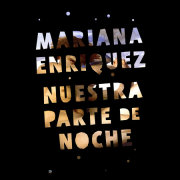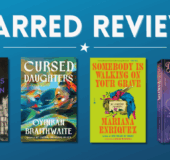Death and the MaidenMonumental Cemetery of Staglieno,Genoa, Italy, 1997I don’t know why Genoa was on our itinerary. It was the nineties, I was twenty-five, my mom had enough money to take her first trip to Europe, and she invited me to go along. I pressed for certain destinations, but Genoa wasn’t on my list. My obligatory Italian stop was Bomarzo: I needed to see the Park of Monsters, which had inspired Manuel Mujica Láinez’s novel named after the small city outside Rome. And I did get to see the park, where I walked into the gaping stone Ogre’s mouth and picked up a rock to bring back as a gift for my best friend. Venice was also a must, mostly because of Lord Byron, so I could walk where he had walked and remember the lines from
Childe Harold’s Pilgrimage: “I stood in Venice, on the Bridge of Sighs, / A palace and a prison on each hand.” Not to mention Tadzio and the plague and the flooded Venetian alleyways.
The Staglieno cemetery was not among the stops I had obsessively planned, though I was aware that it existed. One of its spectacular graves was on the cover of the album
Closer, and another on the single “Love Will Tear Us Apart,” both by Joy Division, but I never liked Joy Division. Although the graves on the covers were beautiful, I didn’t consider a pilgrimage to them necessary.
But when Genoa was added to the itinerary, Staglieno became a brooding obsession for me. Back then, I was not a cemetery connoisseur the way I am now. I had intensely toured the one in La Plata, with its pyramids and sphinxes (the place is sown with dead Freemasons), and I’d been to the Recoleta Cemetery many times, back when it was practically a ghost city of gray vaults, before the tours clogged up the lane where Eva Duarte is buried and before there were whole books written about the cemetery’s quirks, its statues, and stories of people who’d been buried alive. On those early strolls through Recoleta, I’d picked out a grave of my own: I am a poor suburbanite; I can’t be buried in that fancy cemetery by my own rights, not through family or fame. But I want my friends—if I have any left by the time I die—to scatter my ashes inside one tomb in particular: that of Mendoza Paz, founder of the Animal Protection Society. It’s a lofty pyramid with no crosses or Christian symbols of any kind. It says:
“Aquí no hay nada. Solo polvo y huesos. Nada” (“Here lies nothing. Just dust and bones. Nothing”). It has a barred iron door—scattering ashes through it would be easy. That will be my grave, if my friends have the courage to fulfill my wishes.
Those outings were certainly pleasant, but my love for cemeteries began at Staglieno. And the surprise—oh, the surprise of it! The internet existed in 1997, but not like it is now: you couldn’t google images and peer into every nook and cranny of the necropolis. Staglieno was a name to be savored, a photo in a tourist brochure, some words by Mark Twain, the burial place of Constance Lloyd, Oscar Wilde’s widow, a few terribly grainy images on remote Gothic-themed websites. Our frenetic itinerary allocated only two nights to Genoa. One of those two days had to be spent at Staglieno; I decided it would be the second. I had my brand-new manual camera, which I barely knew how to use, at the ready.
The first night, after a day of walking, of churches and palaces, my mom and I ate pizza and then went back to wander around the tourist neighborhood Strade Nuove, with its more than forty palaces, the most magnificent of which is the Palazzi dei Rolli. It was in that area of Genoa that I first saw him, but sometimes, when I think back, I picture him in the Uffizi Gallery, in Florence, I don’t know why. He was definitely playing his violin outside, though, his instrument case open in front of him so listeners could drop coins onto its red lining. He wasn’t theatrical or flamboyant the way street musicians, especially violinists, so often are. I remember that he looked very serious as he played, barely raising an eyebrow, and that he smiled as he took his final bow but stayed reserved and focused, that he never got needlessly dramatic. My mother, I remember, commented that he was quite good. He played the usual: Bach, Paganini’s caprices, some Mozart concerto or other. He wore his hair short, unlike almost every other guy his age in the nineties, especially in Italy. He was tall and wore a black getup that looked like a burial suit, old and a little dirty. The white shirt under his jacket was thin, almost transparent. He left the jacket open.
My mother listened to two pieces and then wanted to head back to the hotel because she was tired. I told her I would stay a while longer. I sat down among the crowd of people that had gathered around the violinist, and I remained there until he noticed my existence and smiled at me, even taking one of his bows in my direction; I applauded every piece.
Never had I seen a boy so perfectly suited for me. Later, when I talked about Enzo back in Argentina, I always said—especially to my girlfriends who had incomprehensible opinions, like how they find ugly men attractive, or how they prefer men with no necks, virile, muscular, broad-shouldered—that Enzo was the most beautiful creature I had ever seen. At least for me, for my idea of beauty, which is shadowy and pale and pliant, black-and-blue, a little moribund but happy, more dusk than night. When he finished his performance—there were three or four of us still listening—I went over to congratulate him, adding that I didn’t speak Italian. He asked me what language I spoke. English and Spanish, I said. He told me his mother was English and his father was Italian, so we could speak in English.
An Italian Englishman, I thought; a creature out of Mary Shelley or Byron. But Enzo hadn’t spent much time in England, and he wasn’t interested in talking about his family. He told me he was hungry, so I offered to treat him, saying I had money. He agreed. He was bold and dissolute; he walked without a sound; he was two heads taller than me. I told him that I usually liked boys with long hair (the spirit of the times!) but that I’d make an exception for him. He said it was ridiculous for a violinist to have long hair, it just got in your eyes and tangled up in the strings, and he felt embarrassed for the street violinists who tossed back their sweaty hair and pretended to be Paganini.
I remember the circles under his blue eyes in the interrogation-style lighting of the pizzeria, and how the waiter winked at him. Italian women are very beautiful, but I was young and wearing a violet dress with silver straps that I’d bought from a street vendor. I only recently threw that dress away, along with a bunch of other clothes that had sentimental value. I could wear it only as a shirt these days, and it would be a pretty small shirt at that.
Enzo invited me to walk around the port. He told me he couldn’t take me to his house: he lived in an
occupata, a squat, where they didn’t allow visitors—they were very strict. I told him I’d thought squatters were the opposite of strict, and he was surprised. Those people are like soldiers, he told me, very regimented, very disciplined. What about you? I asked. My days there are numbered, he replied; they tolerate me because I bring in a little money, and because I’m taking my brother’s place while he’s in a house in Turin.
He lived with several kids who played in bands and a few militant anarchists. He told me the musicians were terrible, and that if I stayed longer in Genoa, I shouldn’t even think of going to see them. “But I like punk,” I told him.
“Italians don’t know how to do punk,” he replied. “Do Argentines?”
“Some of them,” I said. After a while we got up the nerve to admit that when it came to rock and its derivations, we preferred the Anglo varieties.
I told him my mom had liked his playing, and I remember his bitter expression with perfect clarity. “I have some talent,” he told me, “but I had to leave the conservatory a long time ago.” He didn’t say why, and I understood that I shouldn’t ask. He kissed me up against a wall in the port. The air was pure sea; at least, I remember it as pure sea air, without the mixture of gas and fish and grime that ruins most docks. He was cold under his thin shirt. Cold and pale. Like a vampire, like a statue. Like the most beautiful boy in the world.
Copyright © 2025 by Mariana Enriquez. All rights reserved. No part of this excerpt may be reproduced or reprinted without permission in writing from the publisher.

